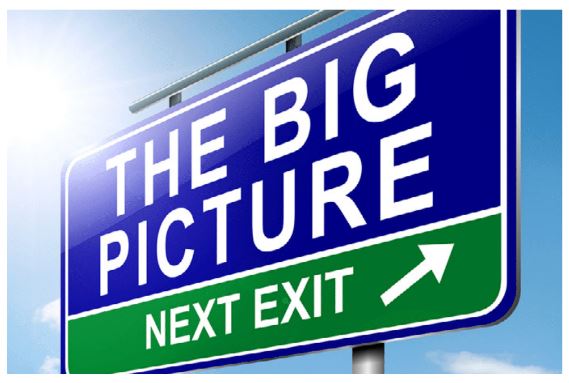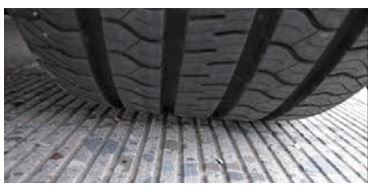Understanding the Big Picture
Jim Thompson
Often when people ask me what sets people apart in an engineering team, I tell them the ability to see the big picture. They usually ask me what this means. So, I thought it would be good to talk about what I mean by this phrase. Fundamentally, I am talking about the ability to see beyond the current project or work assignment. Ideally, people should be able to see how their work supports the ultimate product and provides value, pleasure, or help to the customer.
However, my definition goes further than this. It is important is to be able to do some things with this understanding. This perspective should allow the individual to assess current practices and procedures and see opportunities for improvement. This person should have the ability to work with others to make improvements and build support for such changes in the organization and/or with clients. Seeing the big picture is more than just seeing. It includes using the knowledge to excel. I am not talking about performing miracles, but I am also not looking for someone who blindly follows instructions doing the minimum possible. I see too many people complaining about how things are but not managing to have the vision and skills to make improvements.

Let me give a couple of examples. In a previous article, I noted how I was able to help to keep my company’s tires on a sports car by pointing out to the car’s engineers that I could take an on-ramp 10 miles per hour faster with our tires compared to the competitors. I could have said my job is noise, and I should not mention this, or the sales engineer should bring this up, not me. However, looking at the big picture, the point was to keep the business, not to worry about roles in my company’s organizational chart. In addition, this input only made sense because I knew the business. The competitor’s tire was a regular passenger car tire. It was quieter, but it would not perform as well in handling. Pointing out a concrete and easily verifiable example brought this point home to the customer. My input was a reminder that they were comparing apples and oranges, and the two tires were not directly comparable in terms of overall performance.
Another example from my time at the tire company was in the identification of the customer. When first joining the company, I thought the customer was the vehicle driver/owner. I learned that this was not the case for original equipment tires. In this case, tires are tuned for each OE model. This process can take months with tens of different tire designs before a sign-off is received. The final judgment of noise is made by a test driver. They provide a subjective judgment on noise usually using a 10-point scale. Quickly, I realized that the real customer was the OEM test driver. His or her ratings were the critical factor for noise. The big picture view was that this was where our work had to be aimed. If a tire was objectively quieter, it did not matter if the test driver’s ratings did not reflect this. The other point was that these test drivers were rating tires on sounds that most customers would never distinguish. One useful result of this understanding was that I had every new noise engineer hired participate on a test drive with our test drivers. All came away having to admit they did not even hear the noises to which the drivers were commenting and rating. At least they could see that in the big picture, the customer was not the vehicle owner. Also, it helped them to respect the subjective capabilities of the test drivers.
In some sense seeing the big picture is the opposite of the silos created in many large enterprises. I have found it may be difficult to have a big picture view in some companies. There is often so much competitiveness between groups, teams, or departments that doing something that may be positive for others can be construed as disloyal. I still remember a particular case where I was trying to do what was best for the company and was told I was being disloyal because my solution promoted work done by a rival group. So, it does sometimes take courage to have this view, and sometimes you must be diplomatic in how you express this viewpoint.

Another consideration is that some people do not want to see the bigger picture. Many would rather just focus on what they are doing – their little piece of the world. To me, it seems like such common sense to want to see how the parts fit together and how you can take a much larger role. As the old saying goes “the only problem with common sense is that nobody has it”. Unfortunately, my experience has shown that a lot of engineers do not see beyond the current technical problem. They want to stick to their defined engineering role and avoid getting involved in the larger context. While there is nothing wrong with this approach, it is going to limit career opportunities and their ability to contribute. Maybe, more importantly, it is going to limit their opportunities to grow and learn. I have found that people who are happy in their work are those who have taken on different roles and challenged themselves to do different things. These challenges may be purely technical, but they involve seeing how developing other technical skills – expanding their technical scope can be helpful to the company and or product. These are the people who have a sense of belonging and contributing to the organization, the product, or the world.
Maybe it is helpful to give a concrete example. When I first went to work for the large tire company, the results of noise tests of tire development candidates consisted of a series of spectral plots with comments about tire A being noisier than tire B in particular frequency ranges. After I had been there a bit, I asked one of the tire development chief engineers how they used these reports. He started laughing and said he just looked at the last page to see which tire was best. I asked about the spectral plots and the differences at defined frequencies, and he said you mean the squiggly lines and the Hertz things? Clearly, most of the content in these reports was useless to the immediate customer.
I talked with the engineers in the group and their attitude was that this was the product development engineers’ problem. Later, I learned this was a common problem in larger organizations – silos. People become detached from the end goal and just want to pass the problem on to the next group or silo.
I spent a lot of time working on a better report format. Using historical data and talking to the tire designers and test drivers, I came up with some categories for tire noise that correlated with frequency ranges, tire subjective evaluation terms, and areas of concern to tire designers. Using these categories, tire designers could see where to improve the design and they could relate the test results to subjective test comments. The tire designers really liked the new format and with discussions about how different categories related to aspects of tire design, we all were more effective in improving tire noise performance. For the first time, I could look at the data and tell a tire designer these are the types of changes that would be effective in improving the noise performance.
To my surprise, some of the engineers in the acoustics group did not like this approach. I got comments like: “The spectral plots have a lot more information in them”, “I don’t want to dumb down my reports”, or “Why should I be doing the tire designer’s job for him”. Some of these people could not or would not see the big picture. Over the long term, these people became more unhappy and left or were let go. Those that embraced this idea and took it much farther became leaders and enjoyed great success in the organization.
I know this is a simple example and the interplay between groups and responsibilities in organizations can be complex. However, I have found the more you see the big picture the more you will be able to contribute and the more your contributions will be recognized. Knowing how the product is made, the major product problems, why this customer likes this or that aspect of the product, etc. may not impact what you do day-to-day, but it may provide opportunities and perspectives that change your whole career.

So, I always look for people who understand or are trying to understand the big picture. These are the people who will excel, and who will make the right decisions at critical points. I wish I could define this quality better. It is more than being curious. The curiosity must be combined with the skills to utilize the wider knowledge. One way of looking at it is the combination of curiosity, intelligence, and people skills to build an understanding of the wider enterprise/world and how the pieces fit together. There is also the need to have the perspective or maturity to understand how to provide useful input without offending others. Finally, those who see the big picture can use their understanding and skills in decision making to help make the product and system better and the customer happier.
